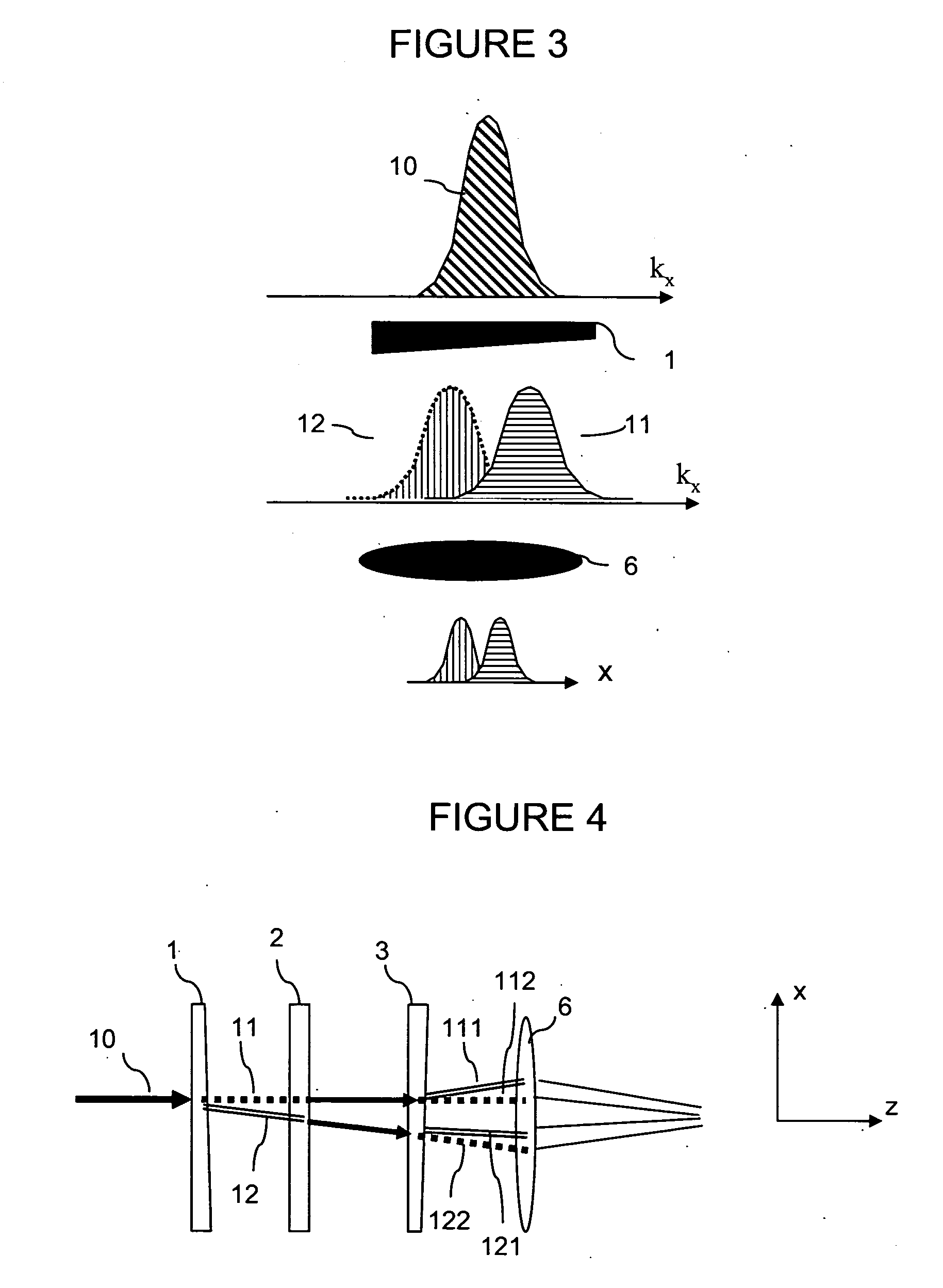Optical beam-shaper
a beam-shaper and optical technology, applied in the field of optical beam-shapers, can solve the problems of large waste of beams, poor beam-shaping using diffractive optics, and particular disadvantages of beam-shapers using diffractive optics, and achieve the effect of enhancing performance and minimizing undesired coherent interferen
- Summary
- Abstract
- Description
- Claims
- Application Information
AI Technical Summary
Benefits of technology
Problems solved by technology
Method used
Image
Examples
example 1
Beam-Shaper for Flow Cytometry
[0078] A beam-shaper essentially as shown in FIGS. 6 and 7 was made and tested. Half-wave plates and wedge elements meeting the following specifications were obtained from Red Optronics (Mountainview, Calif.), the wedge elements as custom ordered components: [0079] Element dimensions: 9.9±0.1 mm diameter [0080] Wavefront distortion [0081] Coating: R[0082] Elements 4, 2, and 5: zero order half-wave plates [0083] Retardation tolerance: [0084] Parallelism: [0085] no epoxy in optical path [0086] Wedge element 1: α1=1.569°±10 arc seconds [0087] Wedge element 2: α2=0.807°±10 arc seconds
[0088] The beam-shaper was assembled such that all angles were within 0.5° of the specified angles. Element 2, oriented in a plane perpendicular to the z-axis, was empirically adjusted to give optimum results, which were obtained, in this case, at an angle between the optical axis and the x-axis of 23.47°.
[0089] The beam-shaper was tested using an input beam from a 375 nm UV...
example 2
Beam-Splitter Design
[0095] The present example describes the design of beam-shaper of the present invention suitable for a specified application.
[0096] In overview, the design of a beam-shaper is carried out by first expressing the intensity profile of the combined output beam as a function of the intensity profile of the input beam and the separation angles of beam-splitting elements, and then optimizing this function to obtain the desired beam profile. Typically, the intensity profile of the input beam is fixed by the choice of the light source, so that in the optimization of the intensity profile of the combined output beam, only the separation angles of beam-splitting elements are treated as input variables. However, if the intensity profile of the input beam can be varied, optimization can be carried out over both the input intensity profile and the angle parameters.
[0097] Optimization of the intensity profile, expressed as a function of the input intensity profile and angle...
PUM
 Login to View More
Login to View More Abstract
Description
Claims
Application Information
 Login to View More
Login to View More - R&D
- Intellectual Property
- Life Sciences
- Materials
- Tech Scout
- Unparalleled Data Quality
- Higher Quality Content
- 60% Fewer Hallucinations
Browse by: Latest US Patents, China's latest patents, Technical Efficacy Thesaurus, Application Domain, Technology Topic, Popular Technical Reports.
© 2025 PatSnap. All rights reserved.Legal|Privacy policy|Modern Slavery Act Transparency Statement|Sitemap|About US| Contact US: help@patsnap.com



